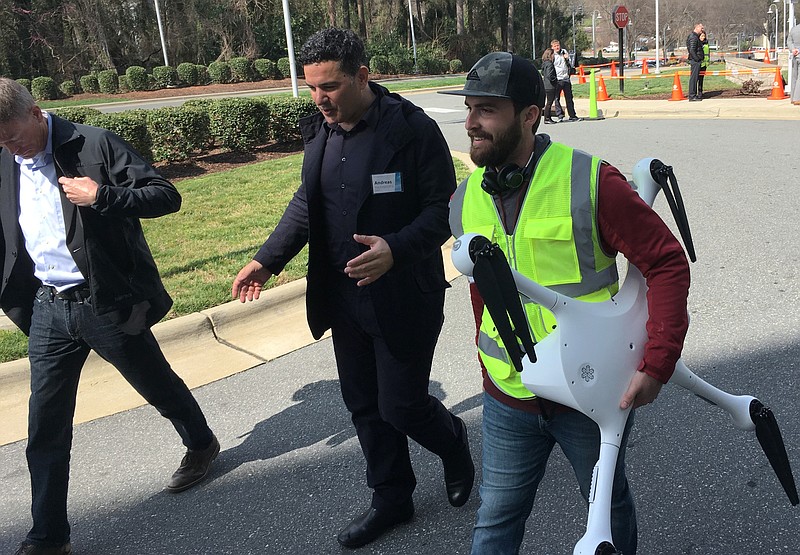RALEIGH, N.C. (AP) — A pioneering use of drones to fly blood samples across a North Carolina hospital campus launched Tuesday in the latest move to expand their roles in business and health care.
The short trips between WakeMed buildings in Raleigh mark the first time the Federal Aviation Administration has allowed regular commercial flights of drones carrying products, according to UPS and drone company Matternet, which partnered with the hospital on the program.
“This is a turning point, and it’s an historic moment because this is the first FAA-sanctioned use of a (drone) for routine revenue-generating flights,” Bala Ganesh, vice president of UPS’ advanced technology group, said in an interview before the announcement.
The FAA confirmed in a statement Monday that it hadn’t previously allowed drones to make routine commercial package deliveries, known as revenue flights. Others have flown drone deliveries as part of smaller-scale tests or demonstrations.
The WakeMed program will start by flying patients’ medical samples one-third of a mile from a medical park to the main hospital building for lab testing at least six times a day five days a week, Matternet CEO Andreas Raptopoulos said in an interview. Vials of blood or other specimens will be loaded into a secure box and carried to a drone launching pad, where they will be fastened to the aircraft and flown to another building. He said the flights will technically be within sight of operators on either end of the route, and they are authorized to fly above people.
The aim is to cut down on the time it takes to transport the time-sensitive samples typically driven on the ground.
“This is going to bring tremendous benefit to health care,” he said in an interview. “Health care is one of these domains of commercial activity where being fast really matters.”

